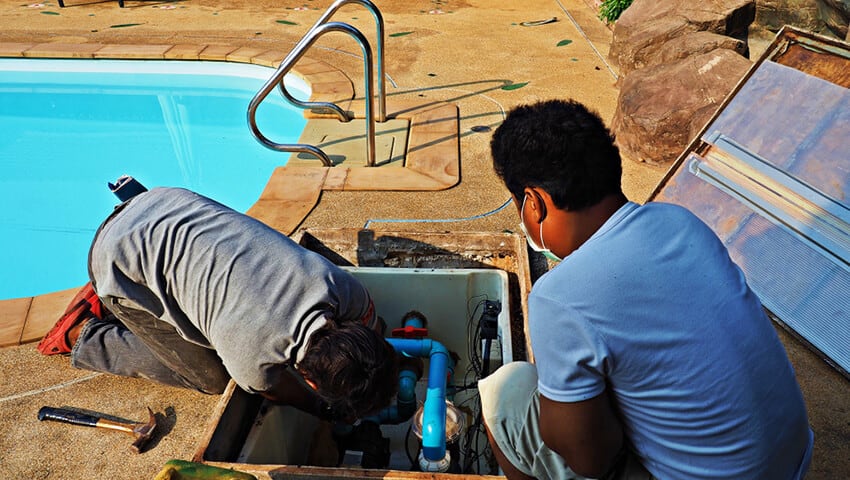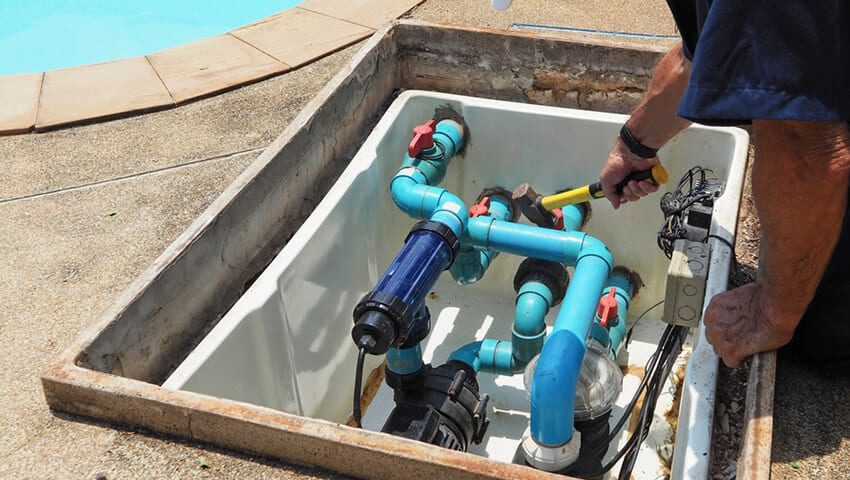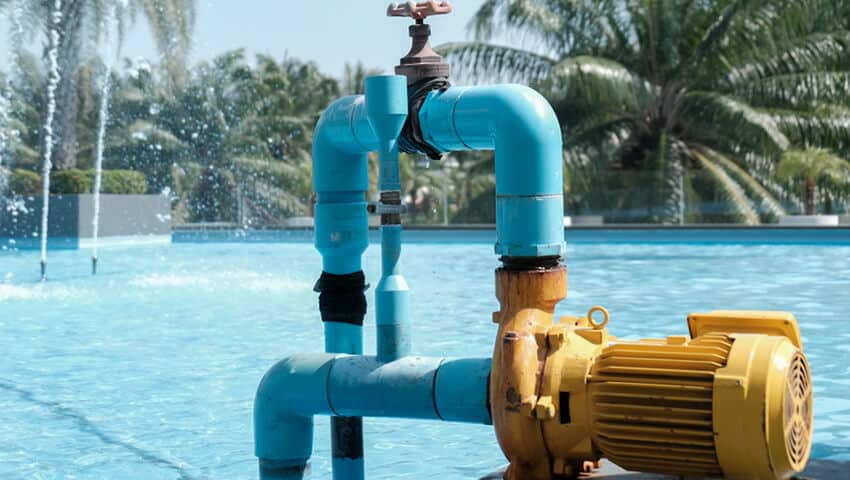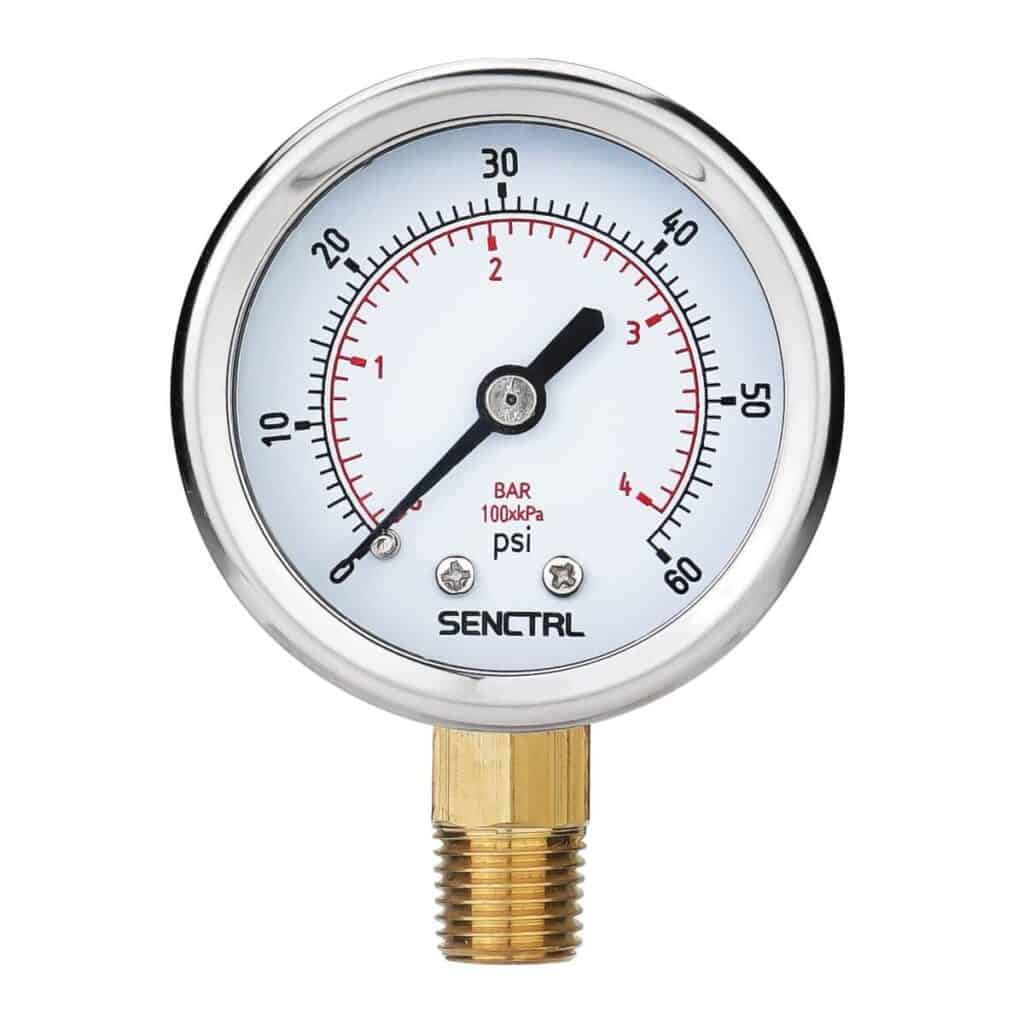Page Contents
- 1 Sand Filters vs Cartridge Filters: Which is the Better Investment for Your Pool?
Sand Filters vs Cartridge Filters: Which is the Better Investment for Your Pool?
Swimming pools, a delightful way to unwind, work out, and refresh oneself in sweltering summers, necessitate an efficient pool filter to sustain cleanliness and hygiene. The selection of a trustworthy pool filter becomes imperative for maintaining an immaculate and salubrious pool. Broadly classified, there are two types of pool filters: sand filters and cartridge filters. Both exhibit distinctive features and in this article, we shall delve into the nuances of each filter type and aid you in selecting the most appropriate one for your pool.
Sand Filters
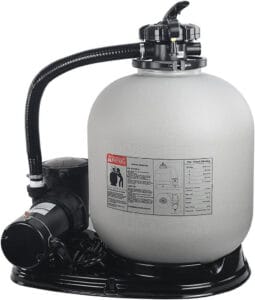 Sand filters are the prevailing type of pool filters that are extensively used. These filters operate by driving water through a sand bed, which functions to ensnare impurities, grime, and other harmful substances. While the water is passing through the sand bed, the particles get trapped, and uncontaminated water is allowed to flow back into the pool.
Sand filters are the prevailing type of pool filters that are extensively used. These filters operate by driving water through a sand bed, which functions to ensnare impurities, grime, and other harmful substances. While the water is passing through the sand bed, the particles get trapped, and uncontaminated water is allowed to flow back into the pool.
Advantages of Sand Filters:
Sand filters offer several advantages, including their proficiency in filtering substantial volumes of water expeditiously. They are relatively easy to install and maintain. Moreover, sand filters are economical, and their sand bed necessitates replacement only once every five to seven years.
Disadvantages of Sand Filters:
Despite their advantages, sand filters have some drawbacks. They mandate backwashing to eliminate debris from the sand bed. This process involves reversing the water flow through the filter, which leads to the wastage of a substantial amount of water. Sand filters are also prone to clogging, which diminishes their filtration efficacy.
Maintenance Requirements for Sand Filters:
In order to sustain the filtration efficiency of sand filters, they necessitate regular backwashing. The frequency of backwashing is contingent on factors such as the size of the filter, the pool’s usage, and the quantity of debris in the pool. Sand filters also need periodic cleaning, and their sand bed ought to be replaced once every five to seven years.
Cartridge Filters
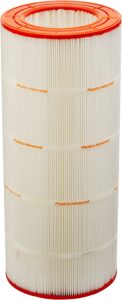 Cartridge filters operate by employing a replaceable filter cartridge that captures contaminants from the pool water. The cartridge is crafted from pleated fabric, which ensnares debris as water courses through it.
Cartridge filters operate by employing a replaceable filter cartridge that captures contaminants from the pool water. The cartridge is crafted from pleated fabric, which ensnares debris as water courses through it.
Advantages of Cartridge Filters:
Cartridge filters offer several advantages, including their superior filtration efficiency. They are capable of filtering smaller particles than sand filters, thus ensuring cleaner pool water. Cartridge filters also necessitate less maintenance than sand filters and can conserve water as they do not require backwashing.
Disadvantages of Cartridge Filters:
However, cartridge filters have some drawbacks. They tend to be more expensive than sand filters and mandate replacement cartridges every one to two years. Moreover, they are less effective at eliminating large debris compared to sand filters.
Maintenance Requirements of Cartridge Filters:
To retain the filtration efficiency of cartridge filters, they require regular cleaning. The frequency of cleaning depends on factors such as the filter size, the pool’s usage, and the quantity of debris in the pool. Cartridge filters also mandate the periodic replacement of the filter cartridge, typically every one to two years.
Comparison between Sand Filters and Cartridge Filters
The main difference between sand filters and cartridge filters is their filtration efficiency. While sand filters are less effective at removing smaller particles and debris from pool water, cartridge filters are designed to capture even the tiniest particles, resulting in clearer and cleaner pool water. However, sand filters are generally less expensive than cartridge filters and require less maintenance, while cartridge filters are more expensive and require more frequent cartridge replacements. Ultimately, the best filter for your pool will depend on your specific needs and preferences, as well as the size and usage of your pool.
Filtering effectiveness
Because they can remove tiny particles from the water, cartridge filters are more effective at filtering than sand filters. Smaller contaminants may flow through the sand bed and back into the pool since sand filters are less effective at eliminating them.
Cost
In general, sand filters cost less than cartridge filters. Sand filters, however, need to be back washed more frequently, which wastes water and raises water costs. Although more expensive, cartridge filters can save water and require less upkeep.
Installation specifications
A pump is necessary for both sand filters and cartridge filters in order to move water through the filter. A leveled and fixed sand bed is necessary for sand filters. Filter cartridges are necessary for cartridge filters, and they must be correctly placed and sealed.
Maintenance specifications
Sand filters need to be back washed more frequently and have their sand bed replaced on occasion. Although cartridge filters require less maintenance, they must be replaced on occasion.
Lifespan
Compared to cartridge filters, sand filters last longer since the sand bed only needs to be changed every five to seven years. Every one to two years, cartridge filters need replacement.
A comparison table summarizes the differences between sand filters and cartridge filters for pools.
| Criteria | Sand Filters | Cartridge Filters |
|---|---|---|
| Filtration Efficiency | Less effective | More effective |
| Cost | Less expensive | More expensive |
| Installation | A sand bed is required. | Filter cartridge required |
| Maintenance | More frequent backwashing and sand replacement | Less maintenance, but cartridge replacement is required. |
| Lifespan | 5-7 years for sand bed replacement | 1-2 years for cartridge replacement |
Comparing cartridge versus sand filters for above-ground pools
Let’s compare the two filters in terms of their benefits and drawbacks for above-ground pools now that you are familiar with the fundamentals of how sand filters and cartridge filters function.
Sand filters for above-ground pools have several benefits:
- can remove huge particles, which makes them perfect for pools with lots of dirt.
- simple to maintain and backwash.
- cheaper initial price than cartridge filters.
- Can endure for 5–7 years if maintained properly.
Sand filters for above-ground pools have the following drawbacks:
- frequently requires backwashing, which can be water-wasting.
- can clog, calling for manual cleaning.
- may not be as effective at removing tiny particles as cartridge filters.
- Choosing the right time to change the sand might be challenging.
Cartridge filters for above-ground pools provide several benefits:
- can remove tiny particles, making them the perfect choice for pools with fine debris.
- Avoid the need for regular backwashing to save water.
- simple to clean and maintain.
- Compared to sand filters, this may result in better overall water quality.
Cartridge filters for above-ground pools have the following drawbacks:
- more expensive upfront compared to sand filters.
- It requires changing the cartridge every one to two years.
- Possibly less successful at removing big particles.
- Cartridges may clog and need to be replaced.
Using Sand and Cartridge Filters Together for Above-Ground Pools
To benefit from the advantages of each type of filter, some pool owners decide to employ a mix of sand and cartridge filters. A dual filtration system is a name given to this technique. The cartridge filter serves as a secondary filter and removes smaller particles, while the sand filter is utilized as the primary filter and removes huge debris. Less frequent maintenance and improved overall water quality may result from this.
Comparison of Inground Pool Cartridge Filters with Sand Filters
Let’s compare sand filters and cartridge filters for inground pools now that we’ve reviewed the fundamentals of each type of filter.
Filtration Power
Cartridge filters typically outperform sand filters in terms of filtration capacity. They can filter out smaller particles than sand filters, so the water they produce is cleaner. Sand filters may still filter out the majority of material very well, though.
Maintenance
Sand filters and cartridge filters both need routine upkeep to work correctly. Periodically backwashing sand filters is necessary to keep water flowing and remove debris that has become lodged in them. When cartridge filters become clogged with debris, they must be taken out and hosed off or replaced.
Cost
Sand filters are typically less expensive than cartridge filters at first. However, sand filters require more frequent replacement than cartridge filters, which could lead to greater overall expenditures.
Effortless Use
The use of sand filters and cartridge filters is simple. While cartridge filters are simpler to clean and maintain, sand filters take less effort overall.
How to Use a Sand Filter and Cartridge Filter Together
The advantages of both types of filters can be obtained by combining a sand filter and a cartridge filter in a pool system. Cartridge filters are more effective at removing smaller particles and provide higher filtration, but sand filters are better at eliminating larger material and require less maintenance. Combining the two filters might aid in maintaining the cleanest pool water possible.
You must set up a sand filter and cartridge filter in sequence in order to use them together. This indicates that the sand filter will be used as a first step before the cartridge filter is used to filter the water in the pool. Sand filters should be installed first in the series since they will remove bigger particles and keep the cartridge filter from being clogged. Installing the cartridge filter second will help to ensure that the water is as clean as possible by capturing tiny particles.
You must join the filters with plumbing lines and valves in order to install the filters in series. Make sure that all connections are snug and secure, and carefully follow the manufacturer’s directions. If you are unfamiliar with plumbing or pool equipment, it is also advised that you hire an expert to install the filters.
After the filters are fitted, it’s crucial to keep up with routine maintenance. To get rid of the dirt that has stuck and avoid clogging, the sand filter needs to be backwashed frequently. Depending on how much use the pool receives and the manufacturer’s instructions, the cartridge filter should either be cleaned or replaced as needed. To make sure the filters are functioning properly, it’s also crucial to check the water chemistry of the pool and make adjustments as necessary.
The cleanest pool water is ensured by combining a sand filter and a cartridge filter. You can take advantage of a clear and healthy swimming environment by adhering to suitable installation and maintenance standards.
Conclusion
There is no one-size-fits-all option when deciding between sand filters and cartridge filters. The best option will depend on your particular needs and tastes, as both filter types offer benefits and drawbacks. Sand filters might be the best choice if you have a sizable pool and are looking for a budget-friendly solution.
Cartridge filters might be a better option if you want a filter with a higher filtration efficiency and fewer maintenance needs. Your budget, the size of your pool, and your personal preferences will ultimately determine your choice. You should be able to make an informed decision and select the best filter for your pool using the information in this article.

